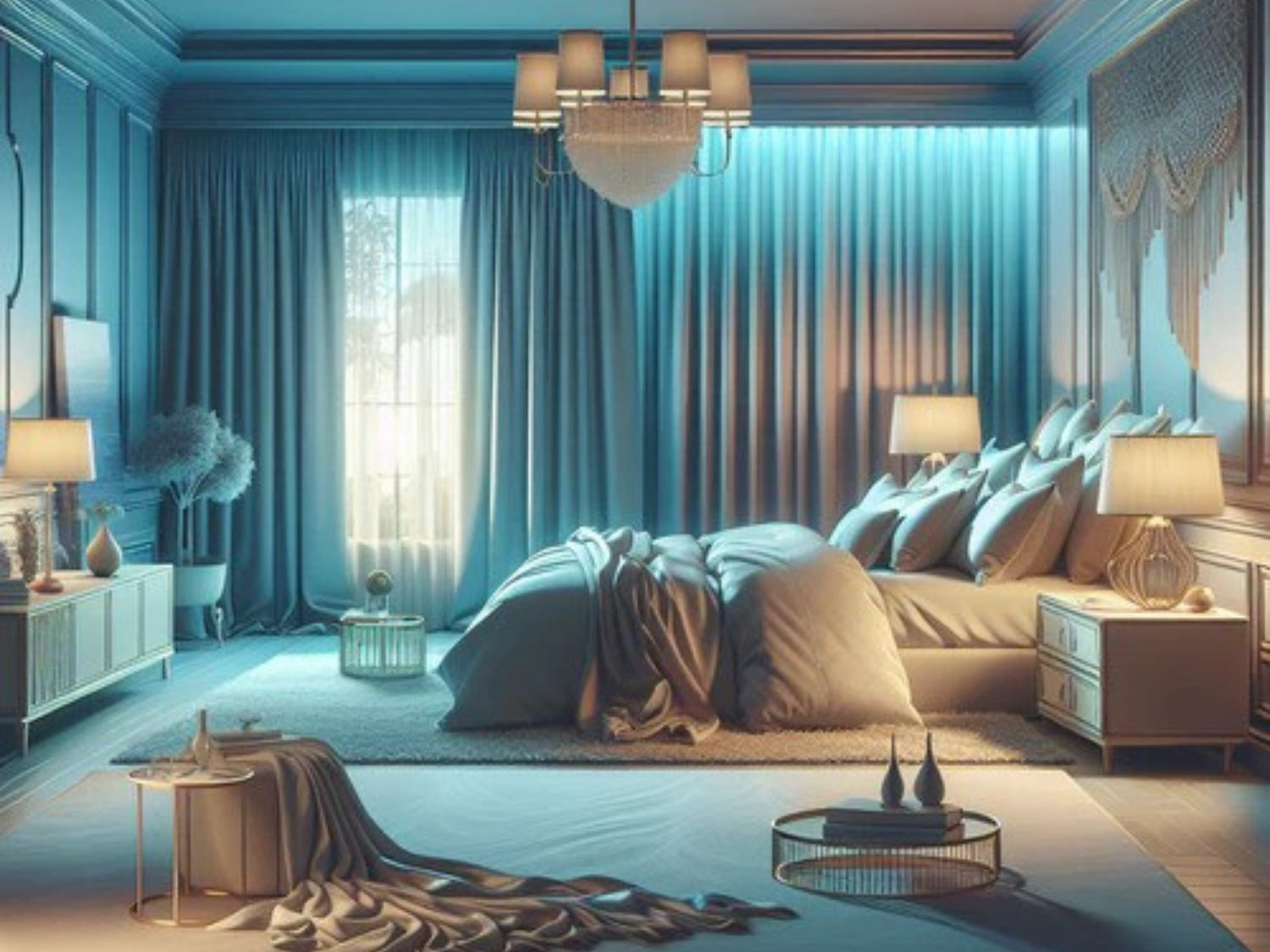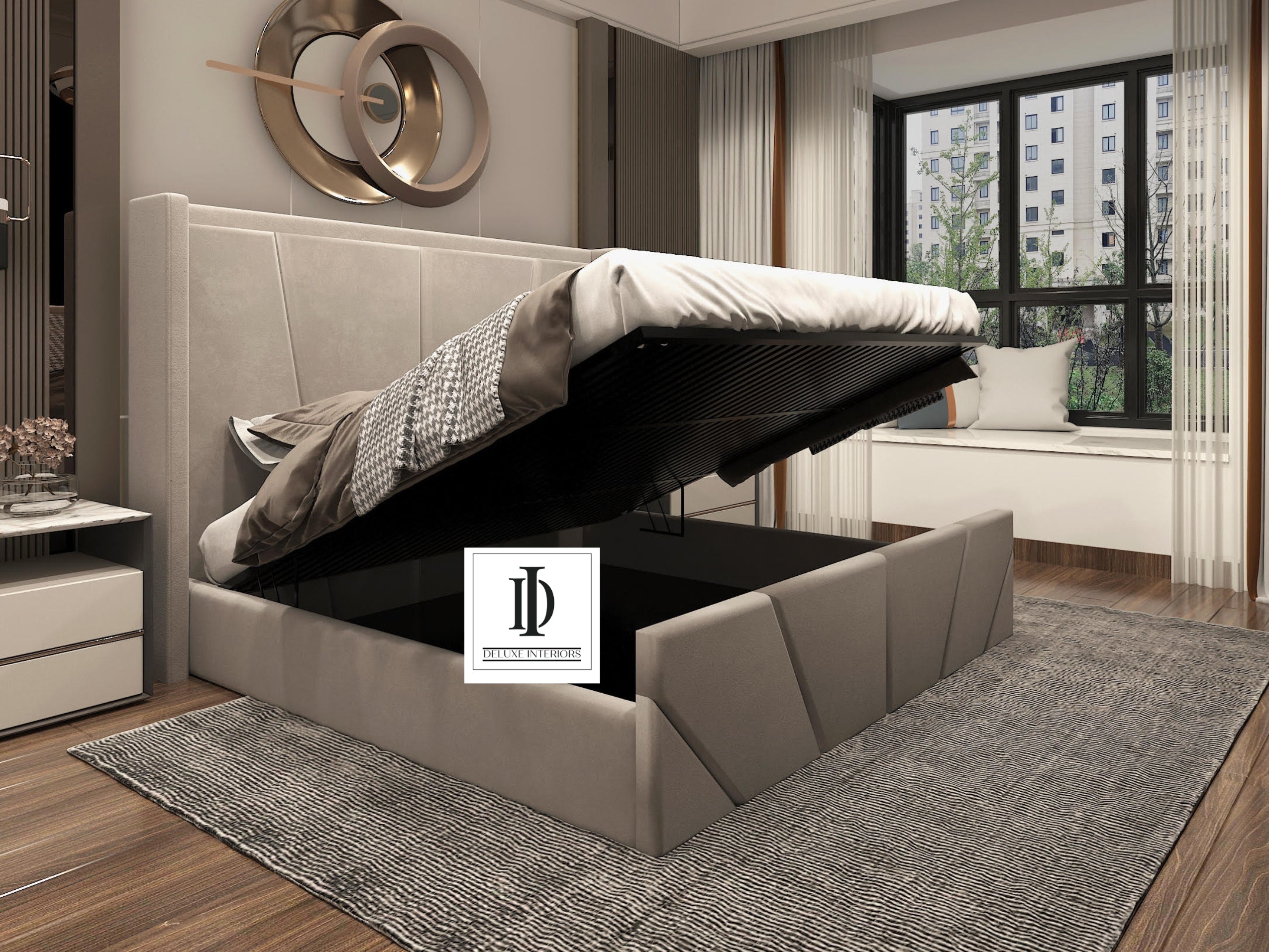Discover the art of selecting bedroom colors that promote relaxation and enhance your sleep quality. Unleash the magic of hues with expert tips on color psychology, soothing tones, and creating a tranquil sleep sanctuary.
The Power of Color: Unleashing the Magic of Hues
How do different colors affect our mood and energy levels?
Colors have a profound impact on our emotions, energy levels, and overall well-being. Each hue carries its own unique vibrational frequency that can either energize or soothe our senses.
The Psychology of Color
- Colors can evoke a wide range of emotions, from the calming blue of a clear sky to the vibrant red of a blazing fire.
- Warm colors like red, orange, and yellow tend to be associated with increased energy, enthusiasm, and even aggression.
- Cool colors like blue, green, and purple are often linked to feelings of tranquility, peace, and relaxation.
- Color preferences can also be influenced by personal experiences, cultural associations, and individual personality traits.
Harnessing the Power of Color
- Strategically incorporating different colors into your environment can have a significant impact on your mood and productivity.
- Bright, energetic colors like red and yellow can stimulate the mind and boost creativity, making them ideal for work or study spaces.
- Softer, more soothing tones like blue and green can help reduce stress and promote a sense of calm, making them excellent choices for bedrooms and relaxation areas.
- Experimenting with color combinations and placements can help you create the perfect atmosphere to suit your needs and preferences.
Which colors are best for promoting relaxation and sleep?
Creating a peaceful and restful environment is essential for quality sleep and overall well-being. Certain colors have been shown to have a calming effect on the mind and body, making them ideal for use in the bedroom.
The Soothing Power of Blue
- Blue is often regarded as one of the most calming and relaxing colors, with its cool, serene tones.
- Studies have shown that exposure to blue light can help lower blood pressure, slow respiration, and reduce stress levels.
- Incorporating shades of blue into your bedroom, such as on walls, bedding, or curtains, can help promote a sense of tranquility and ease you into a restful sleep.
The Tranquility of Green
- Green is another color that is known for its ability to create a calming and restorative atmosphere.
- The natural, earthy tones of green are often associated with growth, renewal, and harmony, making it a great choice for the bedroom.
- Incorporating green into your sleep environment, whether through plants, textiles, or wall colors, can help you feel more grounded and balanced.
The Soothing Nature of Lavender
- Lavender is a color that is closely linked to relaxation and sleep.
- The soft, muted tones of lavender are believed to have a soothing effect on the nervous system, helping to reduce stress and promote deep, restful sleep.
- Incorporating lavender-colored accents, such as bedding, wall art, or even essential oils, can help create a serene and inviting sleep sanctuary.
Are there any colors to avoid in the bedroom?
While certain colors can be incredibly beneficial for promoting relaxation and sleep, others may have the opposite effect and disrupt your sleep-wake cycle.
Steer Clear of Bright, Stimulating Colors
- Vibrant, energetic colors like red, orange, and yellow can be overstimulating in the bedroom, making it more difficult to wind down and fall asleep.
- These colors are often associated with increased alertness, excitement, and even aggression, which can interfere with your body's natural sleep-wake rhythm.
- Avoid using these colors as the primary hues in your bedroom, and instead, save them for more active spaces in your home.
The Disruption of Blue Light
- While blue is generally considered a calming color, the type of blue light emitted by electronic devices can have a detrimental effect on your sleep.
- Blue light exposure, particularly in the evening hours, can suppress the production of melatonin, the hormone that regulates your sleep-wake cycle.
- To create a more sleep-friendly environment, consider limiting the use of electronic devices in the bedroom and opt for softer, warmer lighting instead.
The Importance of Balance
- Achieving the right balance of colors in the bedroom is crucial for creating a tranquil and restorative sleep environment.
- Avoid using too many contrasting or vibrant colors, which can be overstimulating and disrupt your sleep.
- Instead, focus on incorporating a calming color scheme, with soft, muted tones that promote relaxation and rest.
The power of color is undeniable, and understanding how different hues can impact our mood, energy levels, and sleep quality is essential for creating a harmonious living space. By thoughtfully incorporating calming and restorative colors into your bedroom, you can cultivate a sanctuary that nourishes your mind, body, and spirit, and helps you unlock the true magic of restful, rejuvenating sleep.
Designing Your Dream Bedroom: A Colorful Journey
How to select a cohesive color palette for your bedroom?
Choosing the right color palette for your bedroom can make all the difference in creating a warm, inviting, and visually harmonious space. The colors you select will not only set the mood but also influence the overall ambiance and functionality of your personal sanctuary.
Identifying your personal style:
- Begin by considering your individual style preferences and the overall aesthetic you wish to achieve in your bedroom.
- Reflect on colors that you are naturally drawn to and that make you feel most comfortable and at ease.
- Explore design magazines, Pinterest, or interior design websites to gather inspiration and identify color combinations that resonate with you.
Considering the room's purpose and natural lighting:
- Evaluate the primary purpose of your bedroom, whether it's a space for relaxation, productivity, or a blend of both.
- Analyze the natural lighting in the room, as this will greatly impact how the colors appear and interact with the space.
- Opt for colors that enhance the room's lighting and create a sense of balance and harmony.
Establishing a color scheme:
- Decide on a color scheme, such as monochromatic, analogous, or complementary, that best suits your personal style and the room's atmosphere.
- Incorporate a mix of hues, tones, and shades to add depth and visual interest to your color palette.
- Consider using a primary color as the dominant shade and incorporate secondary and accent colors to create a cohesive and visually appealing design.
What are some popular bedroom color schemes and their meanings?
Exploring various color schemes can help you identify the perfect palette for your dream bedroom. Each color scheme carries its own unique energy and emotional associations, influencing the overall ambiance of the space.
Monochromatic color schemes:
- Embracing a monochromatic color scheme, using different shades and tints of the same hue, can create a sense of serenity and sophistication.
- Popular monochromatic options for bedrooms include soothing blues, calming grays, or warm earth tones like beige and tan.
- Monochromatic palettes often evoke a sense of calmness and relaxation, making them an ideal choice for a restful sanctuary.
Analogous color schemes:
- Analogous color schemes utilize colors that are adjacent on the color wheel, such as blue-green, yellow-orange, or red-purple.
- These harmonious color combinations can foster a sense of tranquility and balance in the bedroom.
- Analogous schemes often incorporate a dominant color with supporting shades to create a cohesive and visually appealing space.
Complementary color schemes:
- Complementary color schemes pair colors that are opposite on the color wheel, such as blue and orange or red and green.
- These bold, contrasting palettes can add a dynamic and energetic feel to the bedroom, making them a great choice for those who prefer a more vibrant and stimulating environment.
- Complementary schemes require careful balance to avoid overwhelming the space, but when executed well, they can create a visually striking and captivating bedroom design.
Tips for combining colors effectively in your bedroom design.
Mastering the art of color combination is key to creating a harmonious and visually appealing bedroom. By following these tips, you can craft a space that not only reflects your personal style but also enhances the overall functionality and ambiance of the room.
Establish a focal point:
- Identify a focal point in your bedroom, such as the headboard, a feature wall, or a piece of artwork, and use it as a starting point for your color palette.
- Allow the focal point to guide the selection of your primary and secondary colors, ensuring a cohesive and balanced design.
Incorporate texture and patterns:
- Introduce textural elements and patterns to add depth and visual interest to your color scheme.
- Mix solid colors with textured fabrics, such as velvet, linen, or wool, to create a layered and sophisticated look.
- Incorporate patterned accents, like throw pillows or curtains, to add visual rhythm and complement the solid hues in the room.
Balance warm and cool tones:
- Strive for a harmonious balance between warm and cool tones in your bedroom color palette.
- Warm colors, such as reds, oranges, and yellows, can create a cozy and inviting atmosphere, while cool colors, like blues, greens, and grays, can promote a sense of tranquility and relaxation.
- Mixing these tones can result in a well-rounded and visually appealing design.
Consider the psychological impact of color:
- Recognize the emotional and psychological effects that different colors can have on the occupants of the space.
- For example, blues and greens are often associated with calmness and serenity, while reds and oranges can evoke feelings of energy and excitement.
- Align your color choices with the desired mood and atmosphere you wish to create in your bedroom.
Designing a cohesive and visually captivating bedroom color palette is a transformative process that can elevate the overall aesthetic and functionality of your personal sanctuary. By considering your personal style, the room's purpose, and the psychological impact of color, you can create a space that not only reflects your unique preferences but also promotes a sense of relaxation, comfort, and inspiration. Embrace the power of color and let it guide you on your journey to crafting your dream bedroom.
Transforming Your Bedroom: A Vibrant Color Journey
How to test paint samples effectively in your bedroom?
Choosing the perfect paint color for your bedroom can be a daunting task, but with the right approach, you can turn your space into a true reflection of your personal style. One of the most effective ways to test paint samples is to apply them directly to the walls of your bedroom.
By doing this, you can see how the color reacts to the natural lighting and overall ambiance of the room. This allows you to make an informed decision before committing to a full wall paint.
- Start by selecting a few paint color samples that you're interested in. It's a good idea to choose a range of shades, from light to dark, to get a better sense of how they will complement your existing decor.
- Using painter's tape, create small squares or rectangles on your wall, and then apply the paint samples within these designated areas. This will help you visualize how the color will look in different parts of the room.
- Observe the paint samples throughout the day, as the lighting changes. Notice how the hue shifts and evolves, and how it interacts with the other elements in your bedroom.
- Consider how the paint samples work with your furniture, bedding, and other accessories. This will give you a better idea of how the final color will tie the room together.
Testing paint samples directly on your bedroom walls is an invaluable step in the color selection process. By taking the time to observe the samples under various lighting conditions and in relation to your existing decor, you can make a confident and informed decision that will transform your bedroom into a space you truly love.
Tips for considering lighting and room size when choosing colors.
The size of your bedroom and the type of lighting it receives can have a significant impact on the way a paint color will appear. By taking these factors into account, you can ensure that your chosen color enhances the overall ambiance and atmosphere of the space.
When selecting a paint color, it's important to consider the natural and artificial lighting sources in your bedroom. Lighter colors tend to work well in rooms with limited natural light, as they can help create the illusion of a brighter and more open space.
- For bedrooms with ample natural light, you have more flexibility to experiment with bolder, richer paint colors. These hues can create a cozy and intimate atmosphere, especially when paired with soft, ambient lighting.
- In smaller bedrooms, lighter and more reflective paint colors can help make the space feel larger and more airy. Darker shades, on the other hand, can make a small room feel even more confined.
- Pay attention to the undertones of the paint colors you're considering. Warm-toned hues, such as reds, oranges, and yellows, can make a room feel cozier and more inviting, while cool-toned colors, like blues and greens, can create a more calming and serene ambiance.
By carefully considering the size of your bedroom and the type of lighting it receives, you can choose a paint color that enhances the overall aesthetic and functionality of the space. This will help you create a truly personalized and harmonious bedroom retreat.
Ideas for incorporating accent colors and textures into your bedroom.
Once you've selected the primary paint color for your bedroom, you can further enhance the space by incorporating accent colors and textural elements. This can add depth, visual interest, and a sense of personality to your room.
Accent colors can be used strategically to highlight specific areas of the room, such as a feature wall or a cozy reading nook. Textural elements, such as plush fabrics or natural materials, can add warmth and depth to the space.
- Consider painting a single accent wall in a bold or contrasting color to create a focal point in the room. This can be a great way to incorporate a vibrant hue without overwhelming the entire space.
- Incorporate accent colors through smaller decor items, such as throw pillows, artwork, or even a patterned area rug. These pops of color can help tie the room together and add visual interest.
- Experiment with different textures, such as velvet, linen, or even natural wood, to create depth and warmth in your bedroom. These elements can be incorporated through bedding, window treatments, or even a statement piece of furniture.
- Don't be afraid to mix and match different patterns and textures. By carefully curating the elements, you can create a cohesive and visually stunning bedroom design.
Incorporating accent colors and textural elements into your bedroom can take your space to the next level. By thoughtfully selecting these additional design features, you can create a truly personalized and visually engaging retreat that reflects your unique style and personality.
Q&A
How do colors affect our mood and energy levels?
Colors have a profound impact on emotions and energy levels. Warm colors like red energize, while cool colors like blue soothe. Color preferences can be influenced by experiences, culture, and personality traits.
Which colors are best for promoting relaxation and sleep?
Blue is calming and reduces stress, green creates a restorative atmosphere, and lavender is linked to relaxation and sleep. Incorporating these colors in your bedroom can promote tranquility and restful sleep.
Are there any colors to avoid in the bedroom?
Avoid bright, stimulating colors like red, orange, and yellow, as they can be overstimulating. Blue light from electronic devices can disrupt sleep. Achieving a balance of calming colors is essential for a tranquil sleep environment.
How to select a cohesive color palette for your bedroom?
Identify your style preferences, consider the room's purpose and lighting, and establish a color scheme like monochromatic, analogous, or complementary. Incorporate a mix of hues and tones for a visually appealing design.
What are some popular bedroom color schemes and their meanings?
Monochromatic schemes create serenity, analogous schemes foster balance, and complementary schemes add energy. Each scheme influences the ambiance of the space differently, providing a unique atmosphere.
How to test paint samples effectively in your bedroom?
Apply paint samples directly on the walls to observe how they interact with lighting and decor throughout the day. Testing samples helps in making an informed decision before committing to a full wall paint.
Tips for considering lighting and room size when choosing colors.
Consider natural and artificial lighting sources when selecting paint colors. Lighter colors work well in rooms with limited light, while bold colors enhance spaces with ample light. Undertones and room size also impact how colors are perceived.
Ideas for incorporating accent colors and textures into your bedroom.
Use accent colors strategically to highlight areas in the room or create a focal point. Incorporate textures like velvet or linen to add warmth and depth. Mixing patterns and textures can result in a visually stunning bedroom design.
Master the art of selecting bedroom colors to transform your space into a serene retreat. By understanding the power of color and incorporating calming hues, you can create a peaceful environment that promotes restful sleep and rejuvenation.




Leave a comment
This site is protected by hCaptcha and the hCaptcha Privacy Policy and Terms of Service apply.